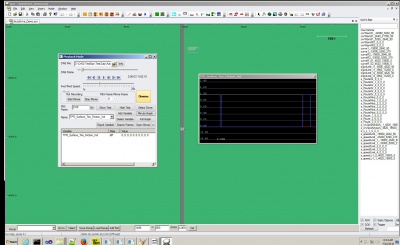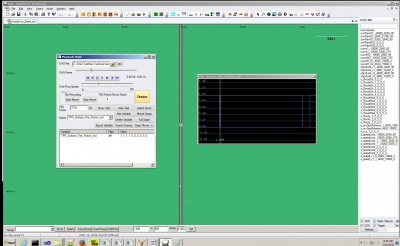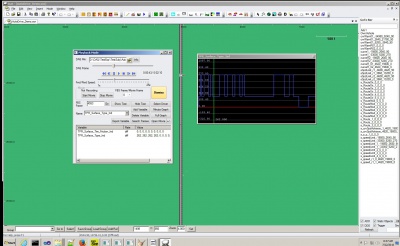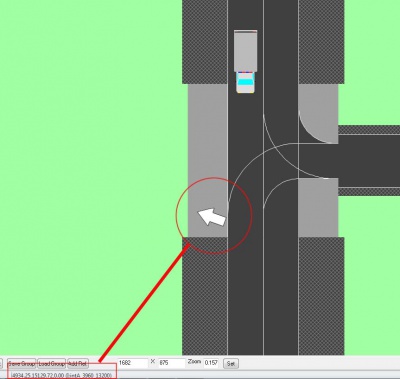FAQ
Q: miniSim is freezing.
We define appropriate steps for correcting unresponsive behavior on a miniSim PC under the following conditions:
* miniSim Software is Running but Will Not Load a Drive Scenario:
- 1. Assuming the mouse is functioning, simply close and then restart the miniSim program.
- 2. If the mouse is not functioning, use the keyboard to close and restart the miniSim program i.e. press Alt+Tab to select the minSim program and press Esc to close.
- 3. This step will fix this unresponsive behavior most of the time.
* A miniSim Drive Has Been Selected but Will Not Start:
- 1. Assuming the mouse is functioning, click on the Settings tab and verify all lines are green (ready mode). If one or more lines are red, simply wait for all to become green. If still not green after about 90 seconds, close and restart the miniSim software normally. This step will fix this unresponsive behavior most of the time.
- miniSim Software Stops Running:
1. Assuming the mouse is functioning, simply close and then restart the miniSim program. 2. If the mouse is not functioning, use the keyboard to close and restart miniSim program i.e. press Alt+Tab to select the minSim program and press Esc to close. 3. If the miniSim software will not close, press Ctrl+Alt+Delete and open Task Manager. Within Task Manager, select the SimopServer program and close it. Restart miniSim. 4. This process generally will recover miniSim from nearly any unresponsive state.
- miniSim PC Shuts Down Unexpectedly:
1. Check for severe storms and possible power outages in your neighborhood. 2. If you see smoke or smell something burning near the miniSim PC, carefully unplug the PC from the electrical outlet and fetch your fire extinguisher just in case. When immediate danger passes, consult a local hardware expert to examine your PC for possible electrical shorts, overheating or failure of critical systems such as motherboard, hard drive and etc. Contact NADS miniSim in the event hardware components need to be replaced. See contact information below.
- The miniSim PC Will Not Boot:
1. On rare occasions your miniSim PC may not boot to Windows. It may halt the boot process just prior to launching Windows. If your miniSim PC has stopped the boot process before a Windows launch, it is okay to touch the reset button on the PC (the small button next to the power button). If your miniSim PC does not have a reset button, touch the power button lightly one time. There may be a slight delay but then your miniSim PC will restart the boot process. This is the safest way to handle an uncompleted boot sequence. 2. In most cases if the system stops prematurely during the boot process, for example, while displaying the motherboard splash screen (typically AMI) or the blinking cursor just prior to the Windows logo, the PC is having trouble enumerating USB devices before loading windows. 3. If the system hangs up during the second boot attempt, please check the USB connections. In particular, be sure the mouse and keyboard (typically connected through a USB hub) are in their designated USB ports i.e. nearest to the round PS2 style port (top for tower systems or far left for rackmount systems). These are typically USB 2.0 ports and are checked first during the USB enumeration process at boot. It is critical that the mouse/keyboard connections are made in this way. 4. If the mouse/keyboard are connected to the correct USB ports, and your miniSim PC still does not boot, disconnect all USB devices (except mouse and keyboard) and systematically reconnect them one at a time in between reboots. This process will eventually and effectively isolate which USB device may be causing the boot problem. To resolve this conflict, simply plug the suspected USB device into a different USB port. Moving these devices to a different port typically resolves this problem permanently. It often (unfortunately) requires some experimentation (read trial and error) but once you find the right combination of USB devices and ports, this problem goes away.
| Q: miniSim is freezing. |
|---|
| A: At times you may find that your miniSim PC or miniSim software has become unresponsive. This document provides recommendations to help you remedy this behavior in a safe and orderly manner. |
| Q: Can I use TPR_Surface_Tire_Friction_Ind to detect what surface the driver is driving over? In my DAQ file I see lots of zeroes, but some sections have ones. What's going on? |
|---|
| A: Values of one and zero in the DAQ file is because the miniSim is configured to provide a value of 1 when that variable changes. |
- From NadsMiniSimCollect.general.txt:
- ; -1 means write to DAQ file only when changes to variable occur
- ; 0 means don't write the variable at all
- ; 1 - n means write the variable to the DAQ file every nth frame
- With these default collect settings, a zero means no change, 1 means a change. Driving a scenario and weaving across and off the roadway results in a DAQ file with ones and zeroes:
- Reviewing the drive DAQ file:
Adding another variable to check what surface types are being driven on (262 is asphalt, mild, dry so this indicates driving on-road):
The file that explains what surface types are can be found in two places: miniSim\data\surfaceType2frictionID.dat (included here in entirety):
# SurfaceIndex NadsDynaIndex Coeff(not used: Here for clarity)
0 1 # Default Condition
1 5 # Terrain
2 14 # Sand
3 6 # Highway
4 6 # Cement
5 15 # Gravel
6 6 # Asphalt
7 12 # Dirt
8 12 # Sod
9 7 # Shoulder
This list is incomplete with respect to the current set of surface material codes used in the tile library and installed worlds. You can find a complete list of available surface material codes (SMC) - (not all of these are used in the tile library, but this is the current version for SMC codes) under the TMT\ProjectData\Tiles\CommonLRIData\SurfaceMaterialSpecifications.xlsx.
MiniSim does not report surface material codes within intersections that do not have an elevation map associated with them, as shown here in ISAT:
For TMT versions prior to 1.8, most intersections do not have elevation maps (v1.8 is in progress and not yet available).
If the issue is that you don’t see 1 values where expected, perhaps you can upload your DAQ file to wetransfer for NADS to review. During testing, I did not ‘lean over’ onto the shoulder – I drove so the entire ownship was on the shoulder, or on terrain.
Another way to check if the driver has left the roadway is to use a lane deviation calculation: if the lane deviation is greater than <measured_total_lane_width> or less than -<measured_total_lane_width>, the driver is likely out of the lane.




